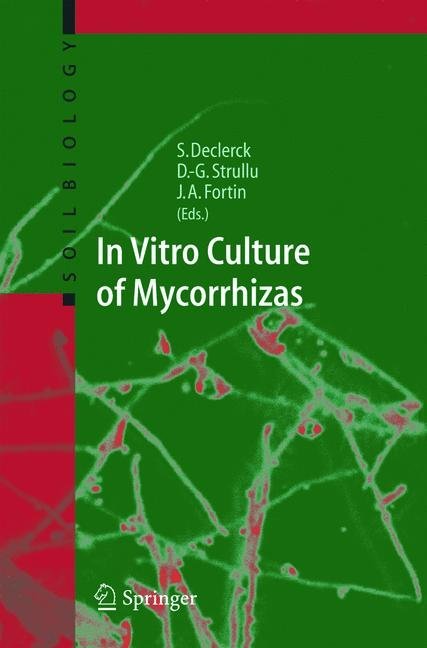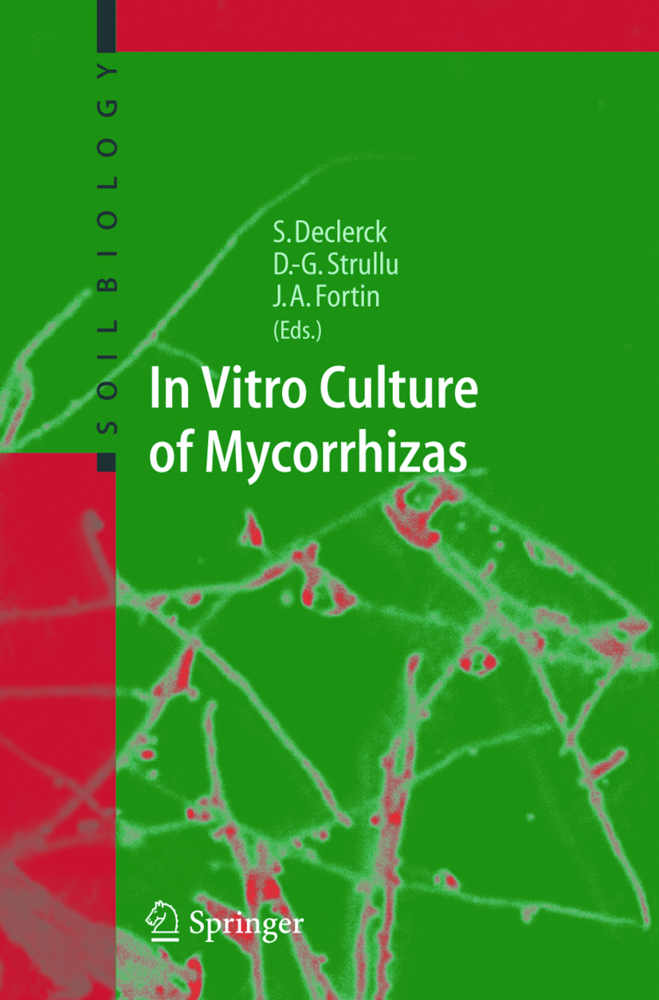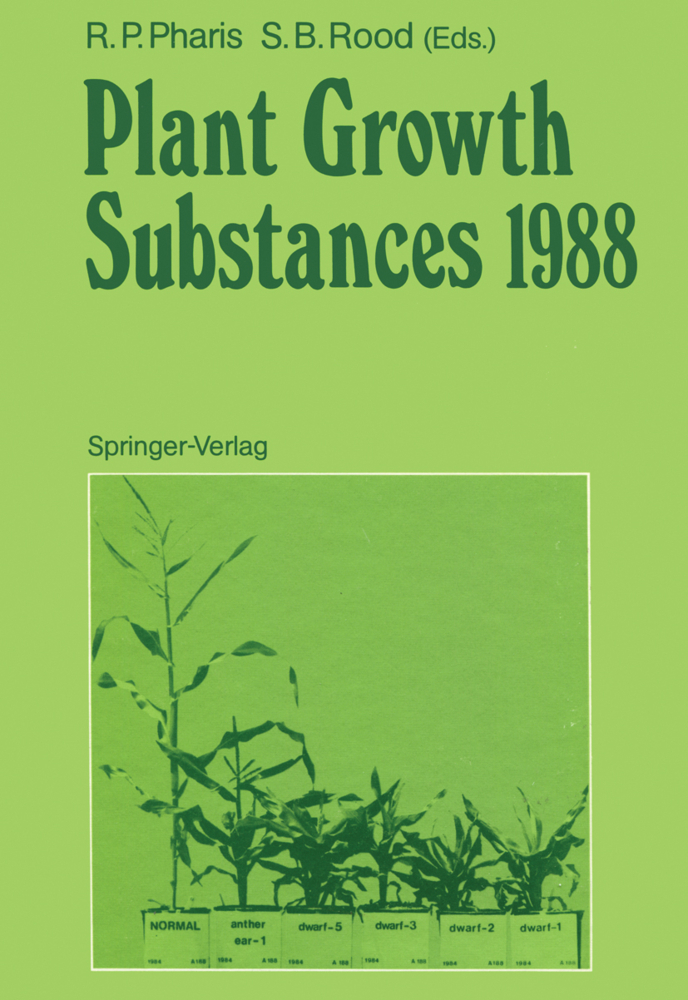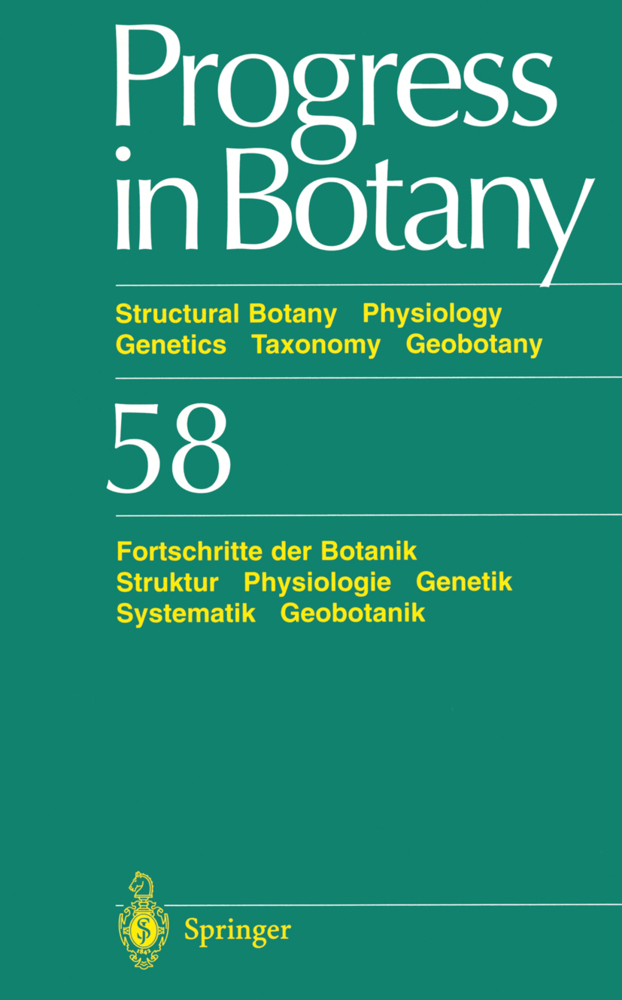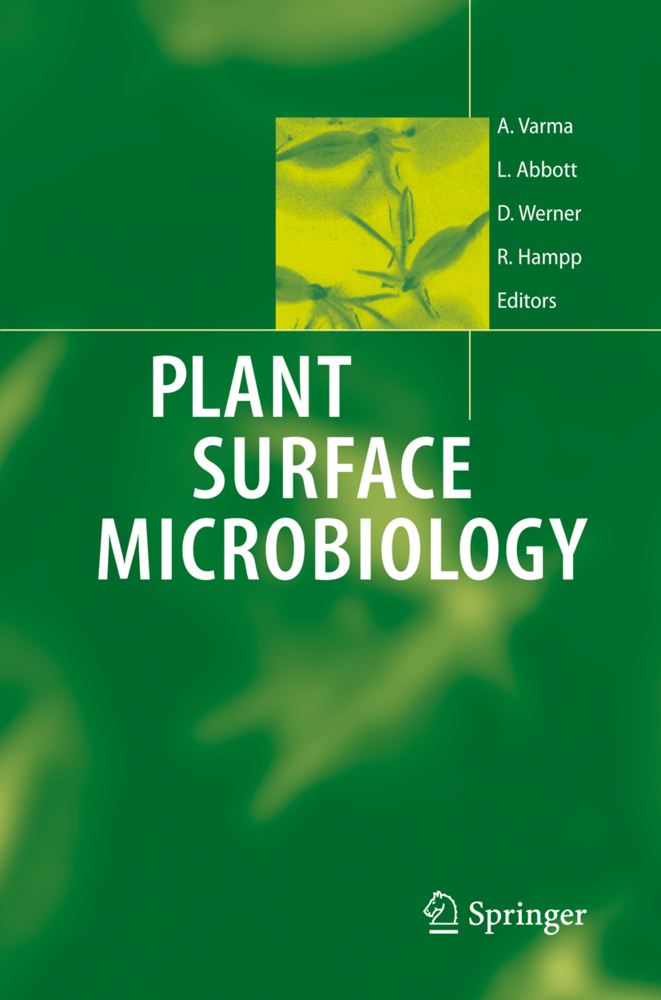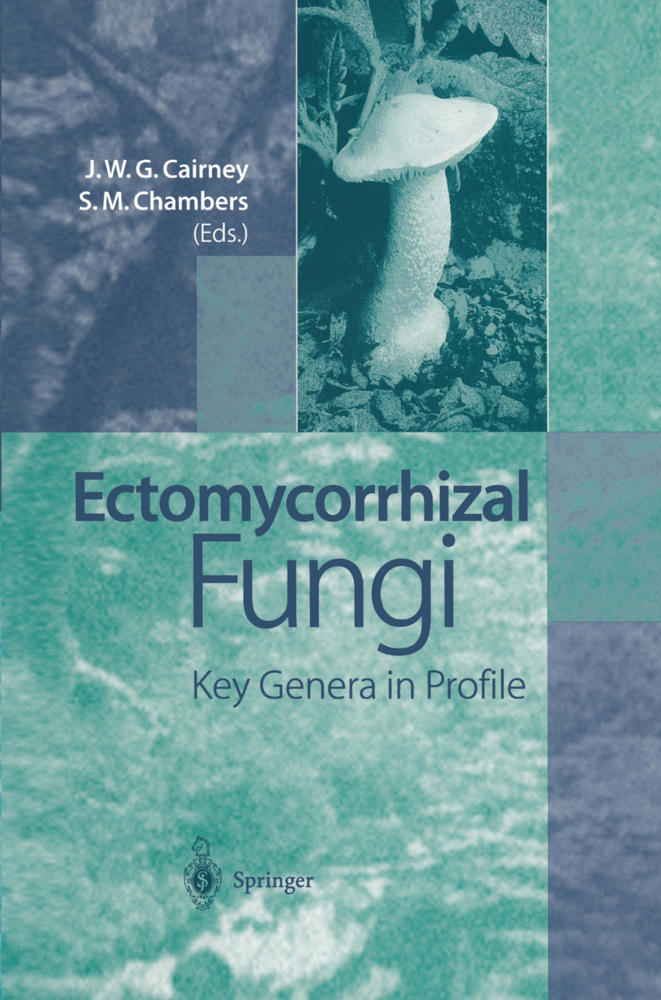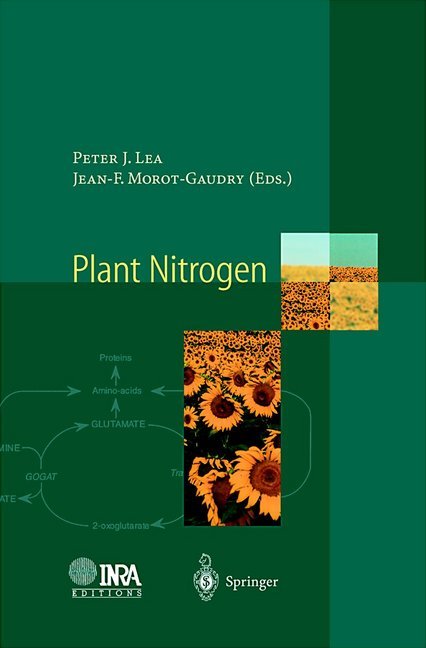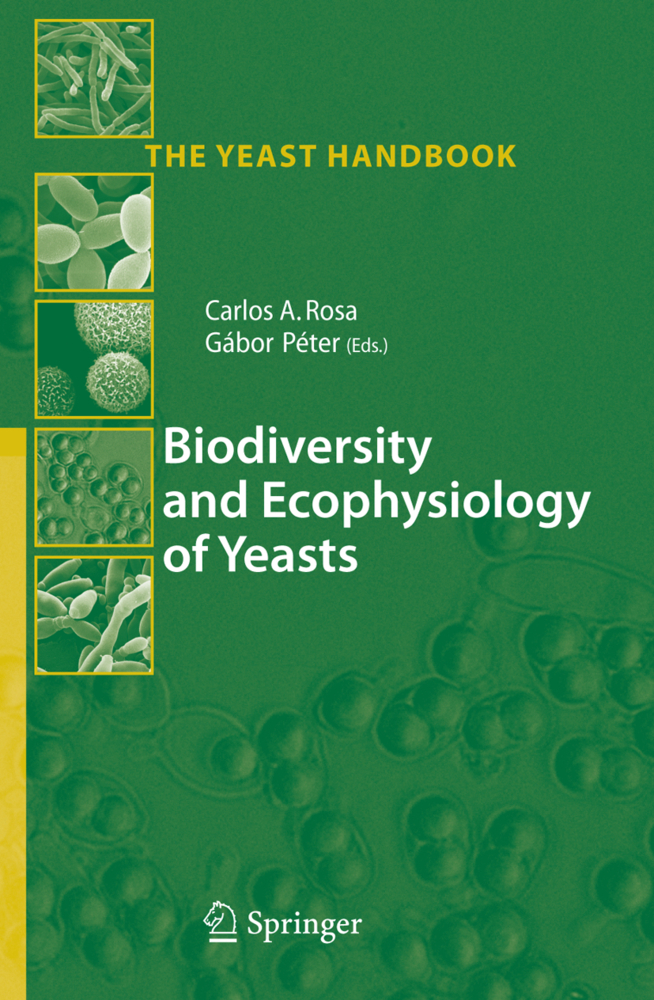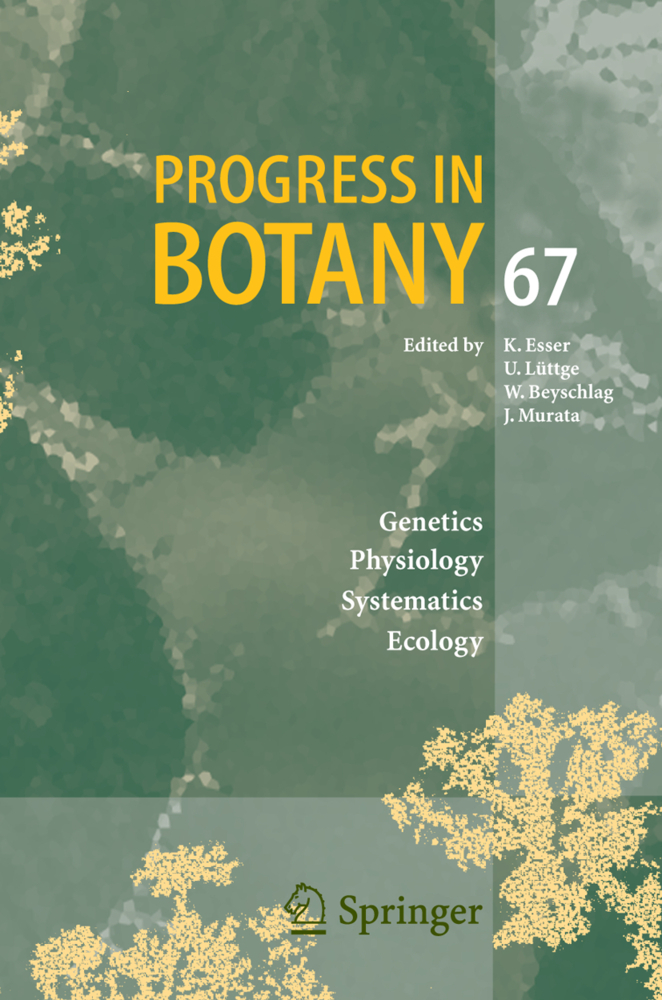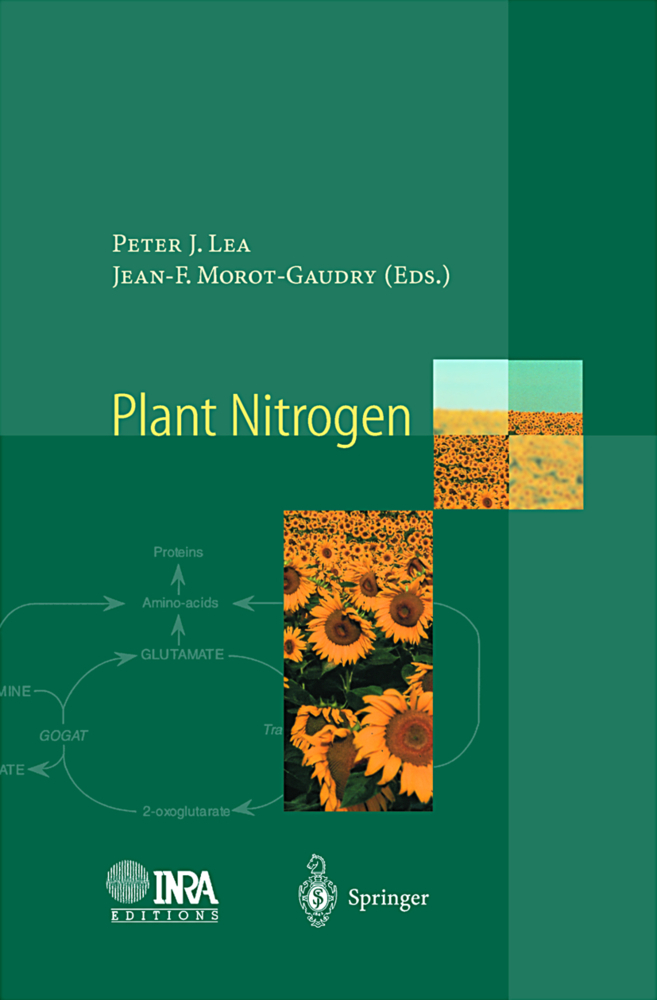In Vitro Culture of Mycorrhizas
In Vitro Culture of Mycorrhizas
The ?rst 30 cm of the earth's surface represents a fragile and valuable ecos- tem, thanks to which terrestrial plants, and indirectly animals and humans, can live. The microbial activity occurring in soil is largely responsible for its physical and nutritional quality. Among the micro-organisms living in soil, the arbuscular mycorrhizal (AM) fungi play a major role. They are present in all types of soil, everywhere on the planet, living in symbiotic association with the roots of most plant species. They have co-evolved with plants for 400 million years, improving their nutrition and resistance to v- ious types of stress. Present practices in conventional agriculture, which introduce great amounts of chemicals, have eliminated or underexploited the AM symbiosis. The rational exploitation of AM fungi in sustainable agriculture, to help minimize the use of chemical fertilizers and pesticides, has been hampered by several biological characteristics of these mic- organisms: they cannot be grown in the absence of a plant host and their genetic structure is very complex. Despite these limitations, biologists have made important progress in understanding better the functioning of AM fungi. An in vitro technique has been developed using mycorrhizal root organ cultures, which made it possible to investigate the genetics, cell biology and physiology of AM fungi. We can now be objective enough to critically evaluate the impacts the in vitro technique has had to improve our knowledge on mycorrhizal symbiosis.
Systematics
The Monoxenic Culture of Arbuscular Mycorrhizal Fungi as a Tool for Germplasm Collections
The Monoxenic Culture of Arbuscular Mycorrhizal Fungi as a Tool for Systematics and Biodiversity
Life Cycle of Glomus Species in Monoxenic Culture
Life History Strategies in Gigasporaceae: Insight from Monoxenic Culture
In Vitro Development and Physiology of Glomeromycetes
Environmental Factors That Affect Presymbiotic Hyphal Growth and Branching of Arbuscular Mycorrhizal Fungi
Breaking Myths on Arbuscular Mycorrhizas in Vitro Biology
Host and Non-Host Impact on the Physiology of the AM Symbiosis
Carbon Metabolism, Lipid Composition and Metabolism in Arbuscular Mycorrhizal Fungi
Monoxenic Culture as a Tool to Study the Effect of the Arbuscular Mycorrhizal Symbiosis on the Physiology of Micropropagated Plantlets in Vitro and ex Vitro
Uptake, Assimilation and Translocation of Mineral Elements in Monoxenic Cultivation Systems
Interaction of Arbuscular Mycorrhizal Fungi with Soil-Borne Pathogens and Non-Pathogenic Rhizosphere Micro-Organisms
Root Organ Culture of Ectomycorrhizal Fungi
Cistus incanus Root Organ Cultures: a Valuable Tool for Studying Mycorrhizal Associations
Cultivation of Edible Ectomycorrhizal Fungi by in Vitro Mycorrhizal Synthesis
Root Organ Culture of Other Fungal Symbioses
Geosiphon pyriformis-a Glomeromycotan Soil Fungus Forming Endosymbiosis with Cyanobacteria
Sebacinaceae: Culturable Mycorrhiza-Like Endosymbiotic Fungi and Their Interaction with Non-Transformed and Transformed Roots
Biotechnology
Large-Scale Inoculum Production of Arbuscular Mycorrhizal Fungi on Root Organs and Inoculation Strategies
Methodology
Methodologies for in Vitro Cultivation ofArbuscular Mycorrhizal Fungi with Root Organs.
State of the Art
In Vitro Culture of MycorrhizasSystematics
The Monoxenic Culture of Arbuscular Mycorrhizal Fungi as a Tool for Germplasm Collections
The Monoxenic Culture of Arbuscular Mycorrhizal Fungi as a Tool for Systematics and Biodiversity
Life Cycle of Glomus Species in Monoxenic Culture
Life History Strategies in Gigasporaceae: Insight from Monoxenic Culture
In Vitro Development and Physiology of Glomeromycetes
Environmental Factors That Affect Presymbiotic Hyphal Growth and Branching of Arbuscular Mycorrhizal Fungi
Breaking Myths on Arbuscular Mycorrhizas in Vitro Biology
Host and Non-Host Impact on the Physiology of the AM Symbiosis
Carbon Metabolism, Lipid Composition and Metabolism in Arbuscular Mycorrhizal Fungi
Monoxenic Culture as a Tool to Study the Effect of the Arbuscular Mycorrhizal Symbiosis on the Physiology of Micropropagated Plantlets in Vitro and ex Vitro
Uptake, Assimilation and Translocation of Mineral Elements in Monoxenic Cultivation Systems
Interaction of Arbuscular Mycorrhizal Fungi with Soil-Borne Pathogens and Non-Pathogenic Rhizosphere Micro-Organisms
Root Organ Culture of Ectomycorrhizal Fungi
Cistus incanus Root Organ Cultures: a Valuable Tool for Studying Mycorrhizal Associations
Cultivation of Edible Ectomycorrhizal Fungi by in Vitro Mycorrhizal Synthesis
Root Organ Culture of Other Fungal Symbioses
Geosiphon pyriformis-a Glomeromycotan Soil Fungus Forming Endosymbiosis with Cyanobacteria
Sebacinaceae: Culturable Mycorrhiza-Like Endosymbiotic Fungi and Their Interaction with Non-Transformed and Transformed Roots
Biotechnology
Large-Scale Inoculum Production of Arbuscular Mycorrhizal Fungi on Root Organs and Inoculation Strategies
Methodology
Methodologies for in Vitro Cultivation ofArbuscular Mycorrhizal Fungi with Root Organs.
Declerck, Stéphane
Strullu, Désiré-Georges
Fortin, André
| ISBN | 978-3-642-06315-2 |
|---|---|
| Artikelnummer | 9783642063152 |
| Medientyp | Buch |
| Copyrightjahr | 2010 |
| Verlag | Springer, Berlin |
| Umfang | XXIV, 392 Seiten |
| Abbildungen | XXIV, 392 p. |
| Sprache | Englisch |

